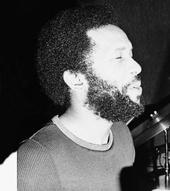Vibraphonist/vocalist Roy Ayers is among the best-known, most-loved and respected jazz/R&B artists on the music-scene today. Now in his fourth decade in the music business, Ayers, known as the Godfather of Neo-soul, continues to bridge the gap between generations of music lovers. In the ’60s he was an award-winning jazz vibraphonist, and transformed into a popular R&B bandleader in the ’70s/’80s. Today, the dynamic music man is an iconic figure still in great demand and whose music has been sampled by music industry heavyweights, including Mary J. Blige, Erykah Badu, 50 Cent, A Tribe Called Quest, Tupac, and Ice Cube.
Ayers recently recorded with hip-hop artist Talib Kweli (produced by Kanye West) and jazz/R&B singer Will Downing. Many of Ayers’ songs including “Everybody Loves the Sunshine,â€, “Searchinâ€, “Running Away†have been frequently sampled and remixed by DJ’s worldwide.
__________________________________________
One of the most visible and winning jazz vibraphonists of the 1960s, then an R&B bandleader in the 1970s and '80s, Roy Ayers' reputation s now that of one of the prophets of acid jazz, a man decades ahead of his time. A tune like 1972's "Move to Groove" by the Roy Ayers Ubiquity has a crackling backbeat that serves as the prototype for the shuffling hip-hop groove that became, shall we say, ubiquitous on acid jazz records; and his relaxed 1976 song "Everybody Loves the Sunshine" has been frequently sampled. Yet Ayers' own playing has always been rooted in hard bop: crisp, lyrical, rhythmically resilient. His own reaction to being canonized by the hip-hop crowd as the "Icon Man" is tempered with the detachment of a survivor in a rough business. "I'm having fun laughing with it," he has said. "I don't mind what they call me, that's what people do in this industry."
Growing up in a musical family — his father played trombone, his mother taught him the piano — the five-year-old Ayers was given a set of vibe mallets by Lionel Hampton, but didn't start on the instrument until he was 17. He got involved in the West Coast jazz scene in his early 20s, recording with Curtis Amy (1962), Jack Wilson (1963-1967), and the Gerald Wilson Orchestra (1965-1966); and playing with Teddy Edwards, Chico Hamilton, Hampton Hawes and Phineas Newborn. A session with Herbie Mann at the Lighthouse in Hermosa Beach led to a four-year gig with the versatile flutist (1966-1970), an experience that gave Ayers tremendous exposure and opened his ears to styles of music other than the bebop that he had grown up with.
After being featured prominently on Mann's hit Memphis Underground album and recording three solo albums for Atlantic under Mann's supervision, Ayers left the group in 1970 to form the Roy Ayers Ubiquity, which recorded several albums for Polydor and featured such players as Sonny Fortune, Billy Cobham, Omar Hakim, and Alphonse Mouzon. An R&B-jazz-rock band influenced by electric Miles Davis and the Herbie Hancock Sextet at first, the Ubiquity gradually shed its jazz component in favor of R&B/funk and disco.
In the 1980s, besides leading his bands and recording, Ayers collaborated with Nigerian musician Fela Anikulapo-Kuti, formed Uno Melodic Records, and produced and/or co-wrote several recordings for various artists. As the merger of hip-hop and jazz took hold in the early '90s, Ayers made a guest appearance on Guru's seminal Jazzmatazz album in 1993 and played at New York clubs with Guru and Donald Byrd. - All Music
